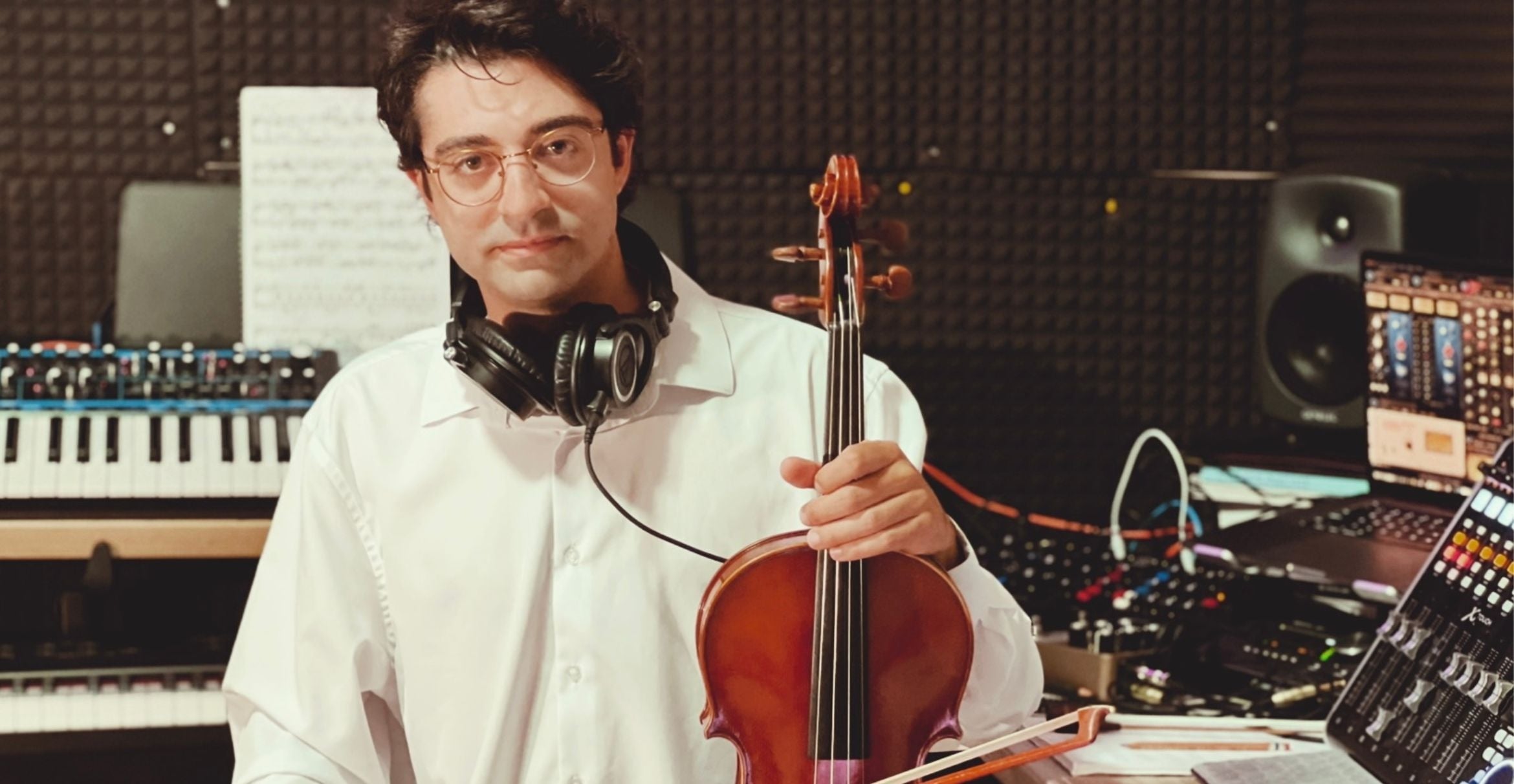
In a stunning exhibition that centered Black experiences, the Art, Design & Architecture Museum (AD&A) at UC Santa Barbara in 2022 presented a new exhibition with largely new works by artist Harmonia Rosales, who employs the pictorial tropes of Renaissance painting to reimagine tales from the West African religion Yorùbá. The show inspired a touring exhibition from Memphis Brooks Museum of Art (MBMA) that will soon visit Spelman College, an Historically Black College, and recently, a catalog (MBMA/Paul Hoberton Publishing, 2023).
“Rosales creates a new Renaissance visuality that foregrounds Black and Latinx experiences,” said Helen Morales, Argyropoulos Professor of Hellenic studies at UC Santa Barbara, who contributed to the new publication. “Her work draws on the transatlantic slave trade because of which many of the Yorùbá myths almost did not survive.”

Morales was the lead curator of the AD&A show “Harmonia Rosales: Entwined,” which MBMA later broadened in scope under the title, “Harmonia Rosales: Master Narrative.” That show, now on view at MBMA through June 25, was curated by Patricia Daigle ’15, an alumna of UCSB’s doctoral program in art history.
A classicist and cultural critic, Morales’ research considers myths as foundational beliefs and spaces for cultural resistance, such as in her book “Antigone Rising: The Subversive Power of the Ancient Myths” (Bold Type Books, 2020). Rosales’ paintings first caught her attention because of how they engaged with, and supplanted, Greek mythology. Rosales’ style of painting mirrored canonical Renaissance works that Morales knew well, such as the Sistine Chapel, but they depict scenes from West African myths. By recasting the European Renaissance style to depict the West African slave trade and tales of the Yorùbá spirits (known as orishas), Rosales contributes to a rewriting of art history’s master narrative.

Morales deepened her understanding of West African religions by seeking advice from Elizabeth Pérez, an ethnographer and historian of Afro-Diasporic and Latin American religions at UC Santa Barbara.
“Rosales focuses on what unites us all,” said Morales, who wrote an essay for the catalog. “It’s social justice but with an optimistic trajectory. Rosales is more interested in what connects us than what divides us.”
Rosales uses Greek and Roman mythologies to draw viewers in, then takes them into potentially less familiar territory. Botticelli’s “Birth of Venus,” for example, tells the story of the goddess Oshun. “(It’s) the story of how she challenged Olodumare, turned herself into a peacock and stormed the heavens, only to be burned by the sun, giving her golden vitiligo,” Morales writes. “The Greek and Roman mythology is a means of smuggling in the Yòrúba religion, in a way that is by no means the same as, but is nonetheless reminiscent of, the original identifications by the Lucumí of their deities with those of their enslavers.”
The first scholarly collection of Rosales’ work, the new catalog features over 20 paintings and a sculptural installation. The illustrated catalog also includes a biography of the artist and several scholarly essays exploring themes ranging from storytelling to depictions of beauty, race and diaspora. AD&A academic coordinator Sophia Quach McCabe, who collaborated on the “Entwined” exhibition, also contributed an essay.
Both museums acquired works from the “Entwined” exhibition for their permanent collections. Rosales gifted the AD&A “Oshosi Gets His Crown,” a 2019 painting of oil on Belgian linen; and the MDMA acquired “Migration of the Gods,” a 2021 oil and gold leaf on canvas painting.
“It was truly serendipitous that ‘Entwined’ was organized by my alma mater, where I did my MA and PhD (alongside consulting curator for ‘Entwined,’ Sophia Quach McCabe),” said Daigle, now associate curator of modern and contemporary art at MBMA, who began working at the MBMA after the acquisition process had begun.
“At the time, Harmonia had never had a solo museum exhibition outside of California or New York, and it seemed like the perfect opportunity to showcase her work and our new acquisition in the South.” Daigle noted that the Memphis show includes the addition of “Master Narrative,” a monumental sculptural installation that reimagines the Sistine Chapel ceiling as the lining of the hull of an overturned slave ship.
“It has been a pleasure to partner with the team at the Memphis Brooks Museum of Art and see our Harmonia Rosales ‘Entwined’ exhibition blossom in their care,” said Gabriel Ritter, director of the AD&A. “Thanks to their dedicated work, their expanded exhibition along with the accompanying catalog bring increased depth of understanding to Harmonia’s painting practice, not to mention exposure to new audiences. It is wonderful to see the scholarship of UCSB faculty and curatorial work of AD&A Museum staff light a spark for major art institutions like The Brooks and for them to take that baton and run with it.”
Debra Herrick
Associate Editorial Director
(805) 893-5446
debraherrick@ucsb.edu



